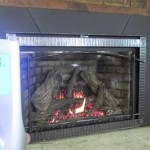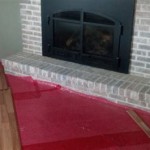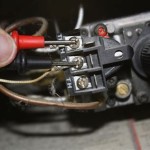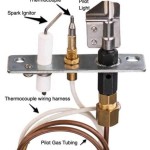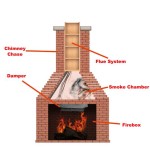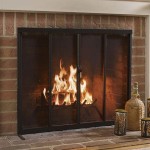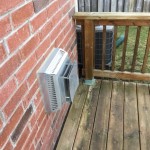Spray Paint for Fireplace Transformation: Options and Considerations
Fireplaces frequently serve as focal points within a home. Over time, the appearance of a fireplace can become worn, outdated, or simply less appealing. Instead of undertaking a costly and disruptive renovation, spray paint offers a viable solution for updating the fireplace's aesthetic. This method provides a relatively quick and inexpensive way to refresh the fireplace's look, provided specific precautions and product selections are carefully considered.
The success of spray painting a fireplace hinges on proper preparation, appropriate product selection, and careful application. Ignoring any of these steps can result in unsatisfactory outcomes, including paint failure, uneven coverage, and even potential safety hazards. This article outlines key points to consider when using spray paint to transform a fireplace.
Surface Preparation is Paramount
Prior to applying any spray paint, thorough surface preparation is imperative. This process ensures proper adhesion of the paint and contributes significantly to the longevity of the finished result. The type of material comprising the fireplace—brick, stone, metal, or wood—will dictate the specific preparation steps required.
For brick and stone fireplaces, cleaning is critical. Begin by using a stiff brush and a solution of trisodium phosphate (TSP) or a similar heavy-duty cleaner to remove soot, dirt, and grease. Rinse the surface thoroughly with clean water and allow it to dry completely. Any loose or crumbling mortar should be repaired before painting, using appropriate patching compounds. If the fireplace has been previously painted, scrape off any loose or flaking paint. Sanding the surface can also help to create a better bonding surface for the new paint.
Metal fireplaces, such as those commonly found in prefabricated units, require a different approach. Remove any rust with a wire brush or sandpaper. Clean the surface with a degreaser to remove any oils or residue. Etching primers are often recommended for metal surfaces to improve paint adhesion. Ensure the primer is fully cured before applying the topcoat.
Wooden mantels and surrounds demand careful preparation due to wood's porous nature. Sanding is essential to create a smooth surface and remove any existing finish. Depending on the existing finish, a chemical stripper may be necessary. After sanding, clean the wood with a tack cloth to remove any dust. Priming is generally recommended to seal the wood and provide a uniform base for the paint.
Masking is also a critical part of surface preparation. Use painter's tape and drop cloths to protect surrounding areas, such as walls, floors, and furniture, from overspray. Take extra care to mask off any parts of the fireplace that are not intended to be painted, such as the firebox opening or any decorative elements.
Selecting the Right Spray Paint
The type of spray paint used is directly linked to both the aesthetic outcome and the safety of the fireplace. Certain types of spray paint are specifically formulated to withstand high temperatures, while others are designed for decorative purposes only. Using the wrong type of paint can lead to blistering, peeling, and even the release of harmful fumes when the fireplace is in use.
For the firebox itself, high-heat spray paint is essential. These paints are formulated with heat-resistant resins and pigments that can withstand temperatures up to 1200 degrees Fahrenheit or higher. They are typically available in black or gray and are designed to protect the metal from rust and corrosion while maintaining their color and finish under extreme heat. When choosing a high-heat spray paint, carefully read the manufacturer's instructions and ensure that it is suitable for the specific type of metal used in the firebox.
For the exterior of the fireplace, including the brick, stone, or mantel, the choice of spray paint is more flexible. However, it is still important to select a paint that is durable, easy to clean, and resistant to fading. Acrylic latex paints are a popular option for these surfaces, as they offer good adhesion, color retention, and resistance to mildew. Chalk paints can also be used to create a distressed or vintage look. Always prime the surface before applying the topcoat to ensure proper adhesion and a uniform finish.
When selecting spray paint colors, consider the overall aesthetic of the room and the desired effect. Neutral colors, such as white, gray, and beige, can create a clean and modern look, while darker colors, such as black or charcoal, can add drama and sophistication. Bold colors can be used to create a focal point, but should be used sparingly. Always test the color in an inconspicuous area before applying it to the entire fireplace.
Application Techniques for a Professional Finish
Even with proper preparation and the correct type of paint, the application technique employed significantly impacts the final appearance. A haphazard application can result in uneven coverage, drips, and runs, detracting from the overall aesthetic of the fireplace.
Before beginning, shake the spray paint can thoroughly for at least one minute to ensure that the paint is properly mixed. Hold the can approximately 10-12 inches from the surface and spray in a smooth, even motion, overlapping each stroke slightly. Avoid holding the can in one place for too long, as this can cause runs and drips. Apply several thin coats of paint, allowing each coat to dry completely before applying the next. This technique is far more effective than applying one thick coat, which is more prone to imperfections.
For intricate details or hard-to-reach areas, consider using a spray paint nozzle extension. These extensions allow for greater precision and control, making it easier to apply paint to recessed areas or corners. When painting brick or stone, pay close attention to the mortar joints, ensuring that they are fully covered with paint.
After each coat of paint has dried, inspect the surface for any imperfections, such as drips, runs, or uneven coverage. If any imperfections are found, lightly sand the area and apply another thin coat of paint. Once the final coat of paint has dried completely, remove the painter's tape carefully, pulling it away from the painted surface at a 45-degree angle. This will help prevent the paint from peeling or chipping.
Proper ventilation is crucial throughout the spray painting process. Work in a well-ventilated area, preferably outdoors, or open windows and use fans to circulate air. Wear a respirator mask to protect yourself from inhaling paint fumes. Allow the paint to cure completely before using the fireplace. Consult the manufacturer's instructions for specific curing times.

Fireplace Makeover Spray Paint Magic

How To Spray Paint The Fireplace Surround My Homier Home

How To Spray Paint Fireplace Interior The Diy Playbook

How To Spray Paint The Fireplace Surround My Homier Home

Spray Painted Fireplace Delph Jj Painting Services

Fireplace Makeover Spray Paint Magic

Stunning Fireplace Transformation

How To Spray Paint A Brass Fireplace Insert Erfly House

Spray Painted Fireplace Delph Jj Painting Services

Fireplace Door Update With Spray Paint Roots Wings Furniture Llc
Related Posts


